SNOWDROPS, SNOW AND SCHUBERT ON THE WAY TO PAINSWICK ROCOCO GARDEN
 The last day of January 2015 was bitter and wet. January has been its grim self and I rather badly want a break. In the darkening afternoon I take myself off to the Dulwich Picture Gallery to catch ‘From the Forest to the Sea – Emily Carr in British Columbia’ (on until 15th March). It is quietly uplifting to be welcomed again into its dark red old-master-encrusted walls and the exhibition of paintings by this feisty, pioneering Canadian painter (1871-1945) is indeed a revelation. I love the folding, almost tropical richness and weight of her earlier forest scenes. There is a mesmerising strength to the white simplicity of the chapel building against the oppressive, towering greens in Indian Church, 1929.
The last day of January 2015 was bitter and wet. January has been its grim self and I rather badly want a break. In the darkening afternoon I take myself off to the Dulwich Picture Gallery to catch ‘From the Forest to the Sea – Emily Carr in British Columbia’ (on until 15th March). It is quietly uplifting to be welcomed again into its dark red old-master-encrusted walls and the exhibition of paintings by this feisty, pioneering Canadian painter (1871-1945) is indeed a revelation. I love the folding, almost tropical richness and weight of her earlier forest scenes. There is a mesmerising strength to the white simplicity of the chapel building against the oppressive, towering greens in Indian Church, 1929.
Indian Church, oil on canvas, 1929, Emily Carr
A decade or so later Carr was working in a different, lighter, faster way. She had moved from the study of monumental, mature forest to painting more open woodland. “I bought cheap paper by the quire. Carrying a light, folding cedar-wood drawing board, a bottle of gasoline (petrol), large bristle brushes and oil paints, I spent all the time I could in the woods”. The resultant paintings of younger, ‘frivolous’ trees have the scratchy energy and flickering licks of colour that remind me of Rodin’s watercolour sketches of dancers.
Happiness, oil on paper, 1939, Emily Carr
Her writing is as intoxicating as her painting. One of her most famous paintings is a dazzling image of a skinny survivor in an area of felled forest Scorned as Timber, Beloved of Sky, 1935.
Scorned as TImber, Beloved of the Sky, oil on canvas, 1935, Emily Carr
She writes “there is nothing so strong as growing…life is in the soil. Touch it with air and light and it will burst forth, like a match”. Definitely the sort of fighting talk I was in need of.
Sissinghurst way
On Monday morning, still thinking about the tirelessness and individuality of Carr’s celebratory study of landscape, I set off to meet Nettie Edwards who has been spending an intensive year as Artist-photographer in Residence at Painswick Rococo gardens. Nettie – whose photographs of Painswick I recommended in my December 2014 blog – has invited me to see the famous Painswick snowdrops and to find out more about her work. The day – happily we are now in February – is cold and bright.
I have decided to spend the journey to Gloucestershire listening to Ian Bostridge’s new recording of Schubert’s WInterreise. As I pass the towering Tesco signs at Earl’s Court to turn West onto the M4 I am driven achingly forward by Bostridge’s fine, eloquent, sometimes startling performance. I arrive at the appointed hour at Painswick Rococo Garden Coach House Restaurant with a bit of a bump.
Before we set foot in the garden I spend two brilliant hours in a subtle rainbow world of plant dye and the quest for sunlight. Nettie’s enthusiasm for her work at the Rococo Garden where she has focused on developing her photographic work with Anthothotypes in particular, is inspiring . She describes the process and many of her experiments eloquently and generously in her blog Hortus Lucis A year in a garden of light : ‘Quite simply, to make an Anthotype you need plant matter and sunlight. Not much of the former, but in most cases, rather a lot of the latter. Dye is extracted from the plant matter, paper is coated with the dye, a photographic transparency is placed on top of the dyed paper, both are exposed to UV light which bleaches away areas of the dyed paper, leaving an image.’
Working at Painswick Nettie wanted to use material seasonally available from the garden. It is the perfect artistic residency for a garden – an incredibly intimate way for an artist to work, where the garden provides both the medium and the subject matter. The often surprising discoveries made by trying to extract dye from different plants gives her work a rich story-telling resonance – during a residency in the town of Atina, Italy she worked with geranium petals from the town square and poignant transparencies from war time photographs and she has just returned from Versailles with a quantity of fallen lichen which she will perhaps use in combination with her strongly geometric photographs of this tightly structured garden.
 Atina Geraniums, copyright Nettie Edwards @lumilyon 2014
Atina Geraniums, copyright Nettie Edwards @lumilyon 2014

Versailles Avenue, copyright Nettie Edwards, @lumilyon 2014
Midnight Eclipse, Sweet Peas, Versailles, copyright Nettie Edwards @lumilyon 2014
The fragility of the final works when they are exposed to light powerfully echoes the ephemeral nature of the flowers and plants from which they are made and this fragility is for Nettie a crucial part of the process.
Nettie’s first experiments with anthotypes had been with wild garlic leaves – the resultant, crisped pale green japanese papers still smell faintly of garlic. The effect of tap water or spring water, the age of the paper (Nettie sometimes uses paper from old books with their built in chemicals which produce extraordinarily different effects) or sometimes vodka are all different and always a journey into the unknown. The names of her portfolio covers alone are rich with connotation: ‘Blue plumbago and tap water’, ‘The Sweetpea papers’ ,’Lilac buddleja with vodka,’Red onion skin and geranium leaves”.
On arrival at Painswick, a surplus of beetroot from the Kitchen Garden led to a fantastic range of papers to work with.
Beetroot coated papers – copyright Nettie Edwards @ lumilyon 2014
This glowering transparency of her photograph of the Eagle House at Painswick:
Transparency of The Eagle House, Painswick Rococo Garden, copyright Nettie Edwards @lumilyon 2014
was pinned against a beetroot coated paper and given many days of sunlight:
Transparency of The Eagle House, against a beetroot coated paper being exposed to sunlight – copyright Nettie Edwards @ lumilyon 2014.
The resultant image is wonderful – rich and subtle and ethereal:
Beetroot Anthotype of The Eagle House, copyright Nettie Edwards @Lumilyon 2014
And here is a gorgeous, subtle later image made with a surprisingly grey-green paper made from purple alliums.
Anthotype with purple alliums, copyright Nettie Edwards @lumilyon 2014
And then we visit the garden itself. There is a lot to work out. Painswick Rococo Garden was created in the 1740’s by the Hyett family and is regarded as one of the finest examples of this kind of personal idyllic pleasure ground. It is laid out in a hidden valley behind Painswick House – the natural shape of the land allowing for a combination of long, formal vistas and geometric patterns as well as the informality of winding paths, asymmetry and a playful collection of garden buildings. A 1748 painting by Thomas Robins is so detailed that no-one is certain if it is a record of the original layout of the garden or indeed a proposed garden design.
Painting of Painswick House and Garden by Thomas Robins, 1748
The garden you see today – restoration from a neglected and overgrown state began in 1984 – is immaculately well cared for and as delightfully easy to enjoy as Robin’s painting:
Painswick Rococo Garden: view to the vegetable garden and yew allée
Nettie shows me some of her favourite elements of the garden – loving the simplicity of sheets of snowdrops, glassy reflections on the Exedra pond and stark regiments of perfectly pruned espalier apple trees – and yet wishing I could somehow simultaneously see it in the softness of late spring:
Sheets of snowdrops in the woodland
The Exedra Pond – the slender line crossing the image is just a temporary fence
The Exedra – faithfully restored with timber and lime plaster – beyond immaculately pruned espaliered apple trees
There is an attractive, practical integrity to the way the garden is now run. Produce from the abundant kitchen garden supplies the friendly Coach House Restaurant which produces delicious food. We had delicious roasted pumpkin soup and shared an incredible orange and almond cake for lunch. The restaurant is the sort of place that puts out a plate of squares of treacle tart on the counter so you can be tempted to a whole slice perhaps or just be happy to have half an inch of outrageous deliciousness.
The garden uses heritage seeds wherever possible and is concerned to grow as many plants as possible which would have been available in the eighteenth century. Even the maze, planted in 1998 to celebrate the 250th anniversary of the Robins’ painting of the garden is cleverly designed by Professor Angela Newing – a physicist and maze specialist who amazingly lived in the town of Painswick – to represent a 2, a 5, and an 0.
The Maze at Painswick Rococo Garden
The two acres of woodland planted in the 60’s are being gently transformed to include a serious holly collection and there is an ever-increasing, well curated list of snowdrops including huge swathes of the substantial, honey-scented Galanthus ‘Atkinsii’ – named after a worker who lived on the Estate in the 1800’s.
Galanthus ‘Atkinsii’
Snowdrops are beautifully grown – they are especially lovely here with sheets of foliage from autumn flowering Cyclamen hederifolium:
Snowdrops with sheets of Cyclamen hederifolium as a foil
And here with the hart’s tongue fern, Asplenium scolopendrium, catching the light and creating a sumptuous glossy woodland feel.
snowdrops with Asplenium scolopendrium
We visit the stocky Pigeon House (the only building in the garden that had a practical purpose – i.e to house pigeons), and the enticingly positioned Gothic Alcove:
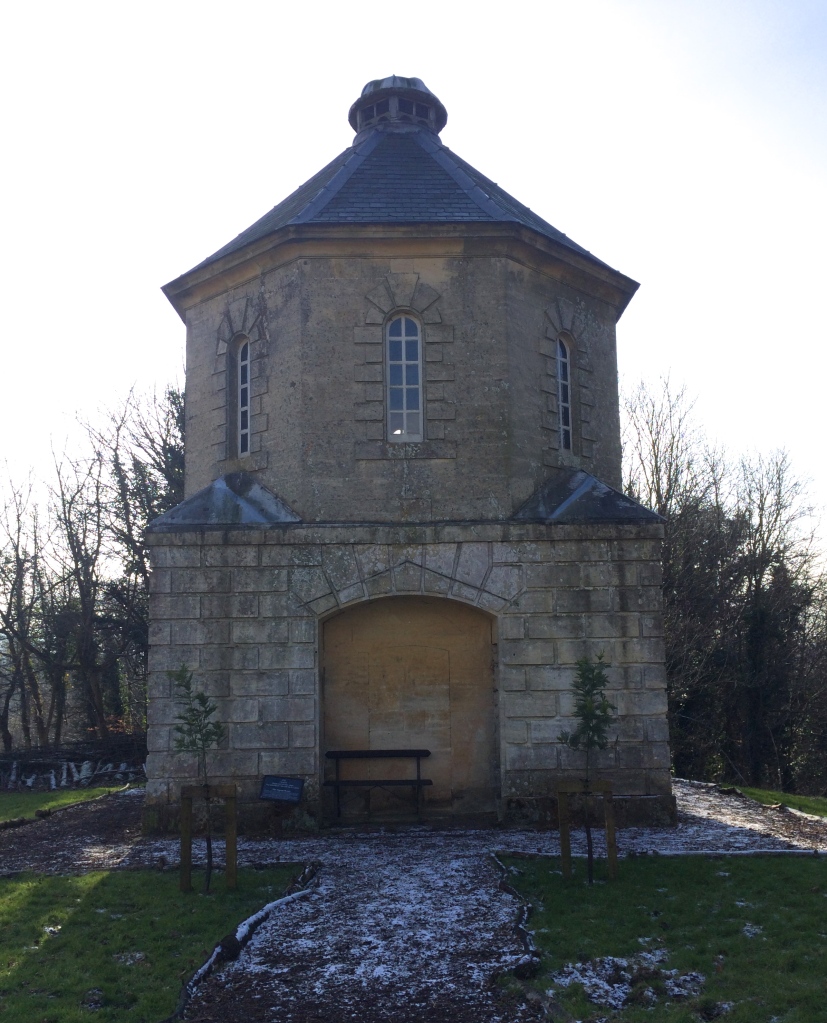 The Pigeon House, Painswick Rococo Garden
The Pigeon House, Painswick Rococo Garden
 The Gothic Alcove, Painswick Rococo Garden
The Gothic Alcove, Painswick Rococo Garden
We walk carefully around The Plunge Pool – famous for being as cold in summer when a gentleman might choose to take a dip, as it is now in mid-winter:
 The Plunge Pool, Painswick Rococo Garden
The Plunge Pool, Painswick Rococo Garden
And as I catch another glimpse of the Exedra, this time through woodland:
The Exedra glimpsed through woodland, Painswick Rococo Garden
and see how two of the buildings play effectively off each other – there is an inevitable, rather impressive view of the Eagle House in the distance with the crisp white Exedra in front – I begin to understand the garden and its buildings better.
 The Eagle House seen in the background with the Exedra in the foreground, Painswick Rococo Garden.
The Eagle House seen in the background with the Exedra in the foreground, Painswick Rococo Garden.
But it is probably only when I come to The Red House – a richly lime-washed asymmetric building with ‘hinged facades’, angled so that each one is enticingly positioned at the end of a key path or allée green door – that I begin to feel really excited:
 The Red House, Painswick Rococo Gardens
The Red House, Painswick Rococo Gardens
I love the lichen-laced oak door which has become a brilliant and inviting bright green:
 The welcoming green door to the Red House
The welcoming green door to the Red House
And the mottled, chalky texture of the red lime wash – a handsome backdrop to the light gloss of the hart’s tongue fern
 Hart’s Tongue Fern – Asplenium Scolopendrium – against the red lime-washed walls of the Red House
Hart’s Tongue Fern – Asplenium Scolopendrium – against the red lime-washed walls of the Red House
The door way frames the view effortlessly:
 View framed by the Red House doorway
View framed by the Red House doorway
And the simple ashlar stone interior with its handsomely paved floor is brightly illuminated by intense pockets of stained glass; these in turn cast floaty pools of colour on the pale grey interior:
 Stone floor, The Red House, Painswick
Stone floor, The Red House, Painswick
 A stained glass window, The Red House, Painswick
A stained glass window, The Red House, Painswick
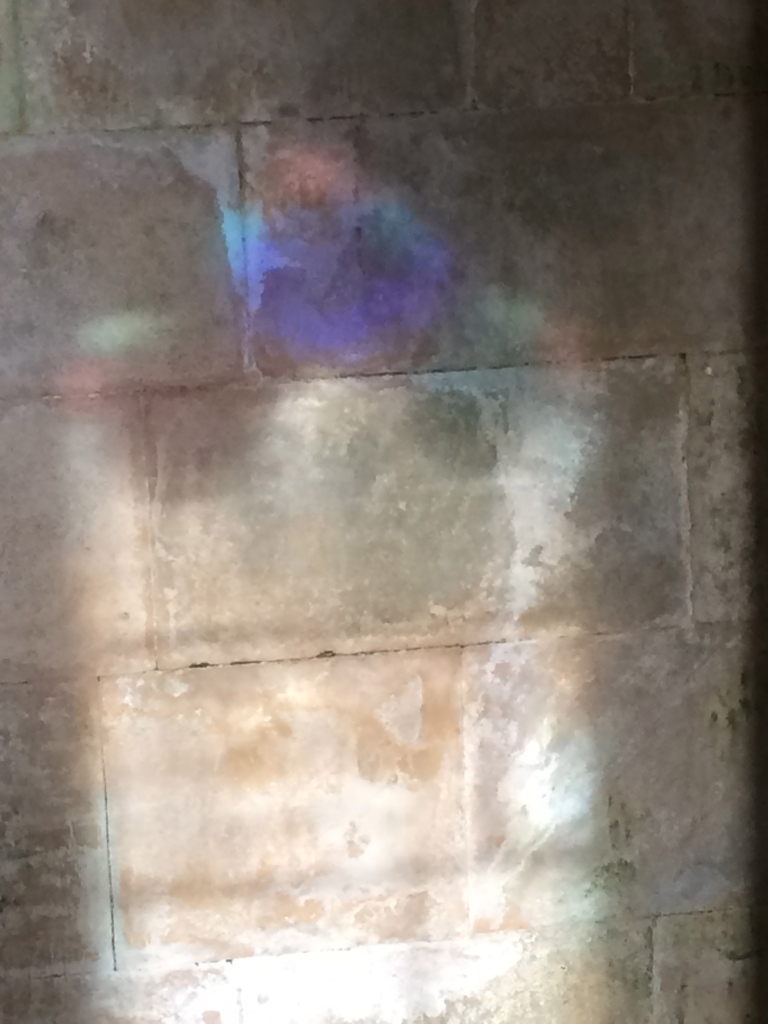 Reflection of coloured glass on stone, The Red House, Painswick
Reflection of coloured glass on stone, The Red House, Painswick
As I walk around the garden one more time in the fading light, the windows take on a tantalising mirrored effect:
 Tantalising mirrored effect of late afternoon sun on the windows, The Red House, Painswick
Tantalising mirrored effect of late afternoon sun on the windows, The Red House, Painswick
I leave the garden and drive towards Aston Magna to spend the night with my sister and her family in their new house. As we peel ourselves away from the wood burning stove to head for bed we realise it has started snowing properly. There is something special about experiencing your first snow in a new house.
And so to my perfect bedtime reading. I am part of the way through Ian Bostridge’s book about his relationship with Schubert’s ‘WInter Journey’, the ‘Winterreise’ which he sings so beautifully.
I am hugely enjoying the book: it is written in a compellingly simple style with a perceptive clarity that shines a light on everything it touches. I love the graceful, investigative pace of it, the way the text moves from an illuminating analysis of a single line to a rich exploration of other literature or a painting, perhaps, that has a connection to the Lieder. In the chapter on Frühlingstraum, Dream of Spring, Bostridge explains what is at stake in the piece and the subtle decisions needed from the piano introduction onwards. He then takes the idea of the ‘leaves and flowers’ ‘painted’ by the frost on the window pane, and the painful longing for the green of spring throughout this song, and illustrates how German literature is “suffused with the notion of Eisblumen, ice flowers”. He moves outward to take in images of fire and ice in Charlotte Brontë’s novels and then to give a beautiful account of the exquisite history of the study of snowflakes.
Page from the Frühlingstraum chapter, Schubert’s Winter Journey – by Ian Bostridge
Page from the Frühlingstraum chapter, Schubert’s Winter Journey, by Ian Bostridge
We wake the next morning to a delightfully pale world and go for a wonderful winter walk.
 A pair of deer, winter walk, Gloucestershire
A pair of deer, winter walk, Gloucestershire
Lines and tracks in snow, winter walk, Gloucestershire
 Pheasant footprints in snow, winterwalk, Gloucestershire
Pheasant footprints in snow, winterwalk, Gloucestershire
 Patterns of snow on lichen-encrusted branches, winter walk, Gloucestershire.
Patterns of snow on lichen-encrusted branches, winter walk, Gloucestershire.
I drive back to London listening again to the Winterreise but promising to return to Painswick when it is soft and full again with Queen Anne’s Lace and apple blossom.
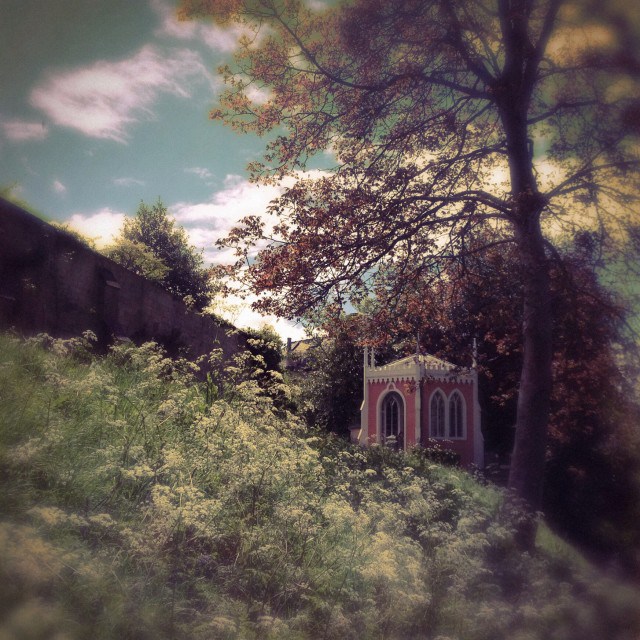 Eagle House, Painswick Rococo Garden, May 2014, copyright Nettie Edwards @lumilyon 2014
Eagle House, Painswick Rococo Garden, May 2014, copyright Nettie Edwards @lumilyon 2014







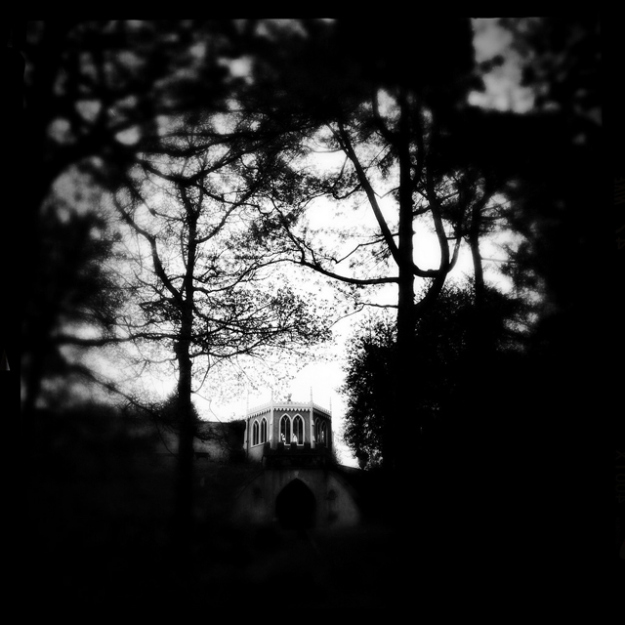

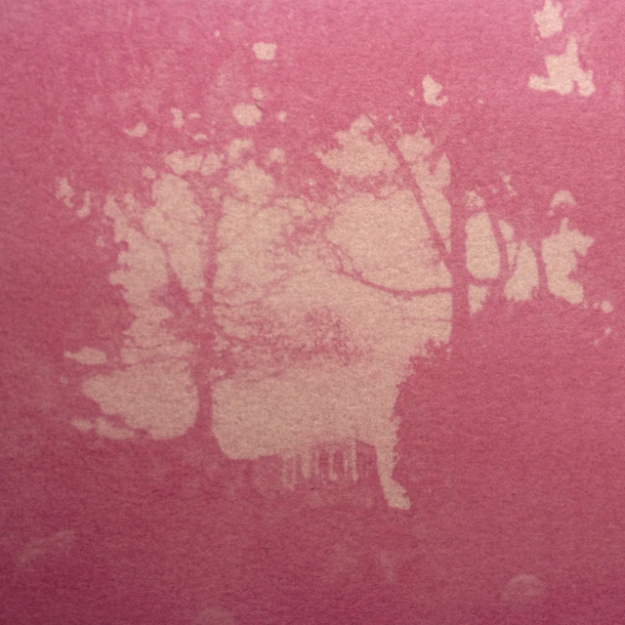



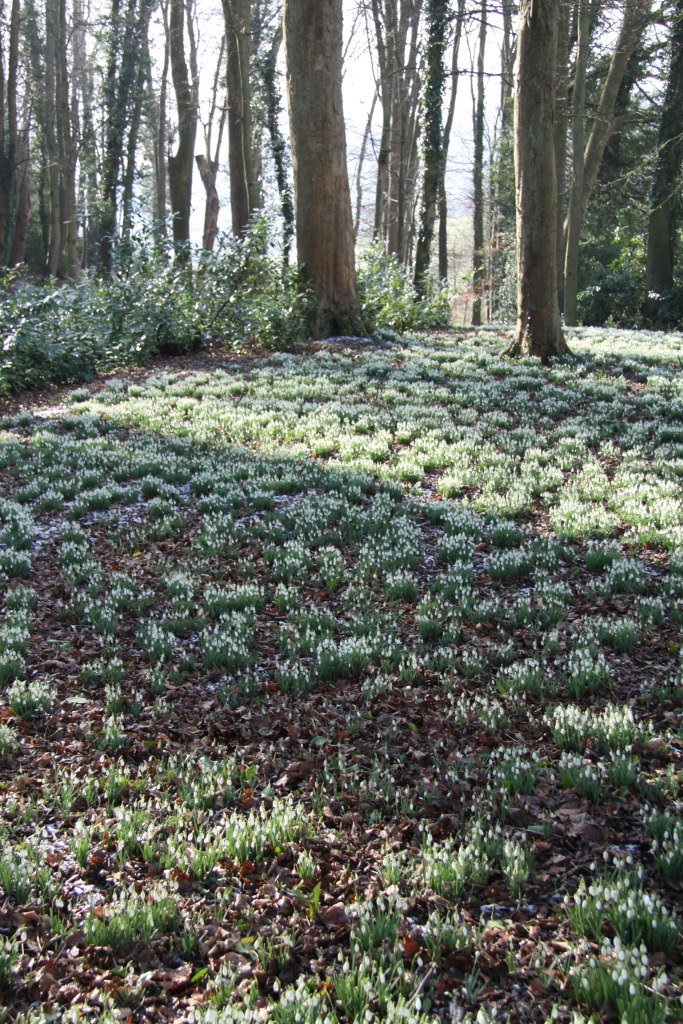










Gorgeous & beautiful & too much! I’m taken back to Painswick when I lived briefly down the road in Slad in the 1970s. But this is much more than I remember. I should return.
Thanks so much for your kind comment (I hope too much is more good than bad?!). Am very happy you are such a friendly and appreciative follower! Very best, Non
I’ve been to Painswick a couple of times and it’s one of my favourites for snowdrops. I blogged about my first visit, sadly the Red House wasn’t open then as it was being renovated, but like you I was very taken by its glass and the play of light when I was there a second time. Paul Hervey-Brookes was the garden’s nursery owner before he went on to big things in the design world. He made some interesting observations on the garden’s design which you may be interested in – forgive the inclusion of a URL, I try not to leave them, but I think it adds to your discussion of the garden 🙂
http://vegplotting.blogspot.co.uk/2010/02/garden-visit-snow-on-snow-at-painswick.html
Have you seen the marvellously bonkers yews in the churchyard at Painswick? They’re worth a diversion the next time you’re there, if you haven’t.
Pingback: Snowdrop Time At Painswick | LUMILYON
Pingback: Snowdrop Time At Painswick | Hortus Lucis